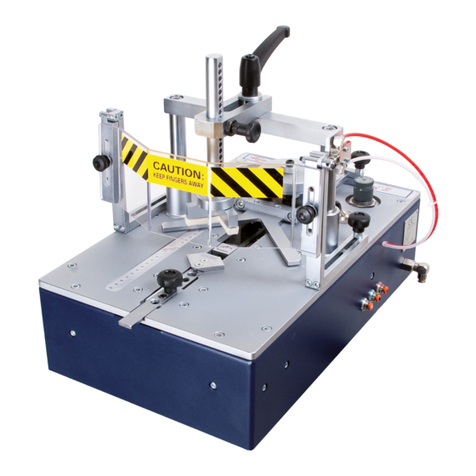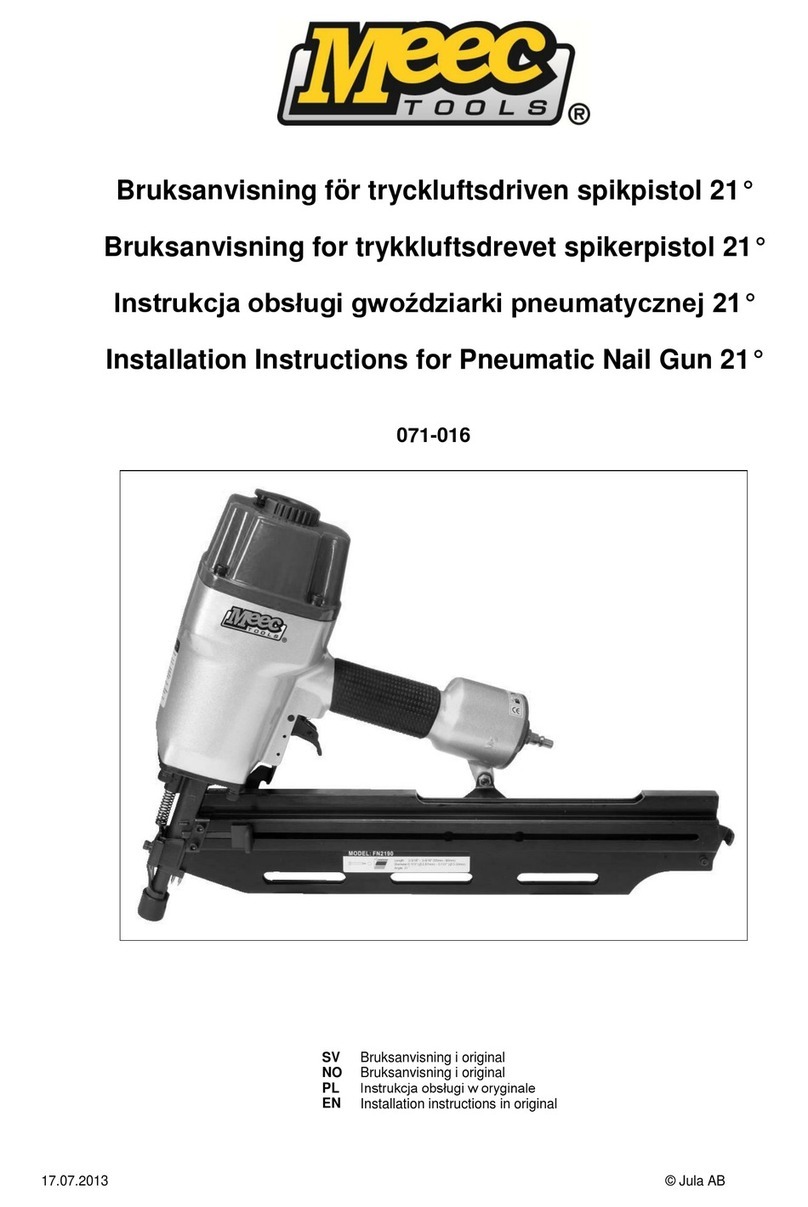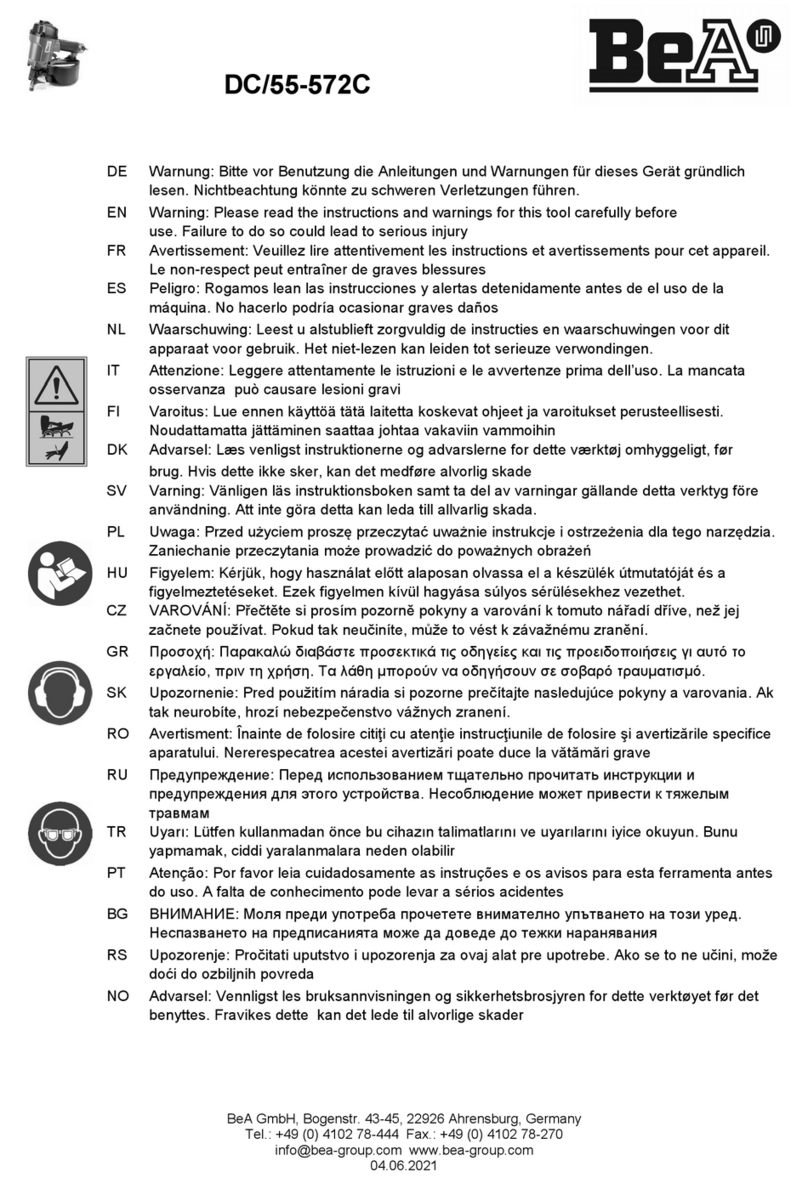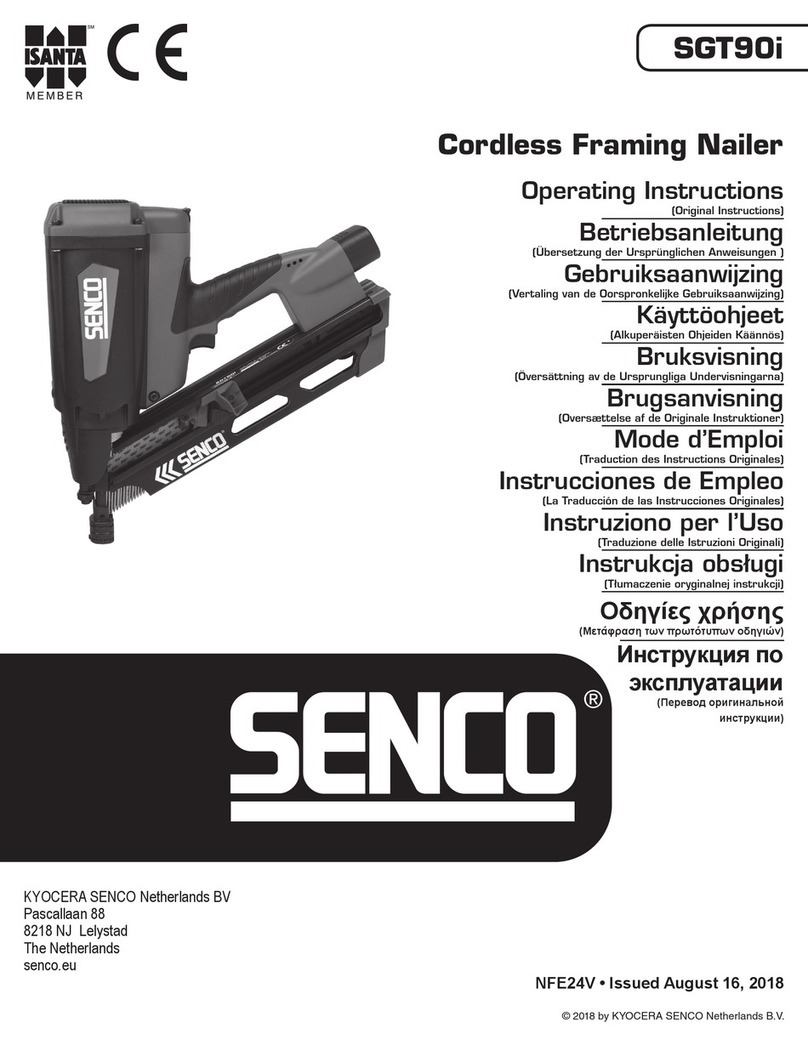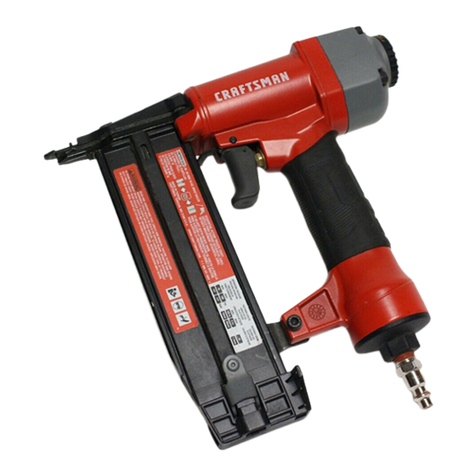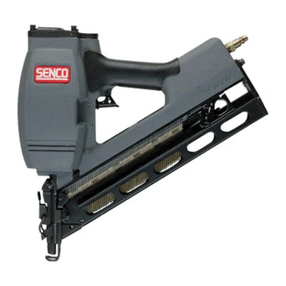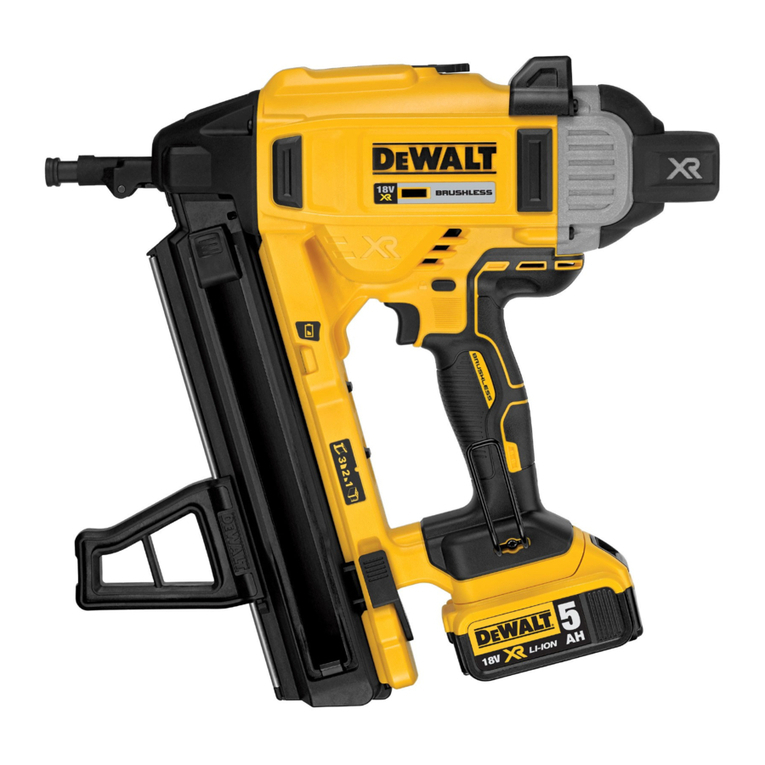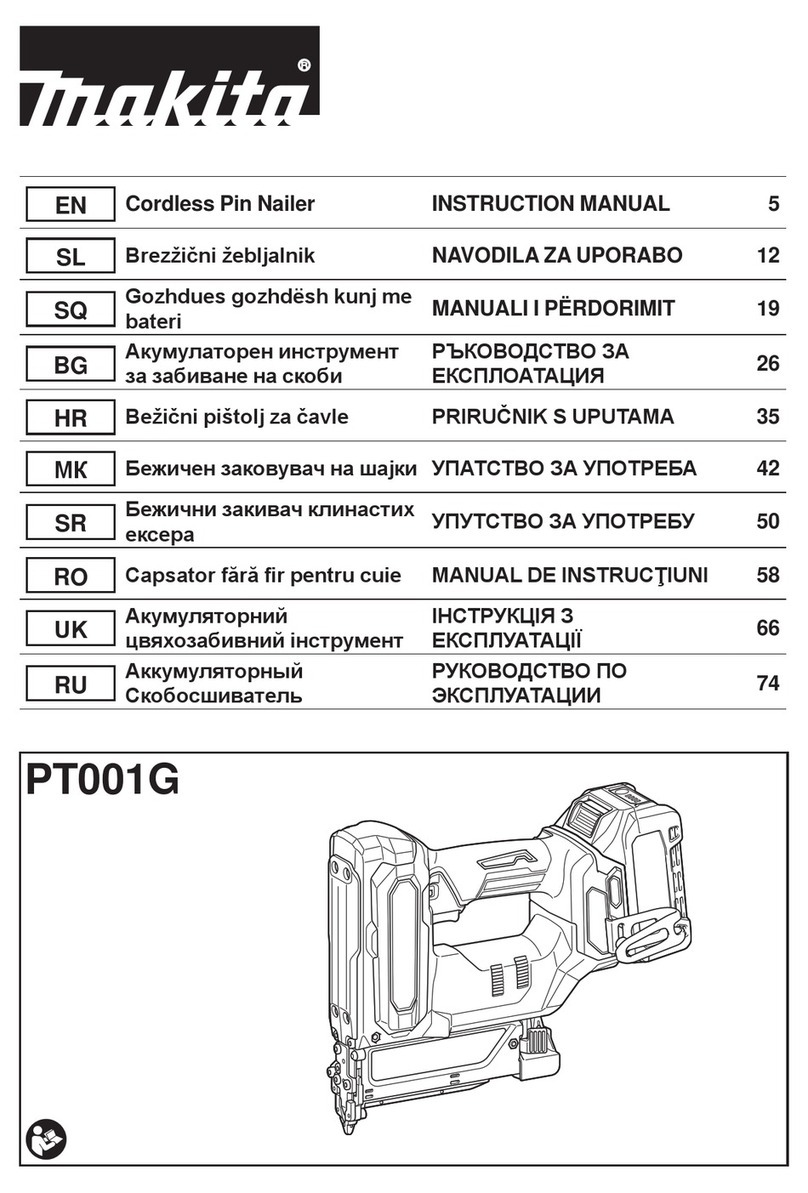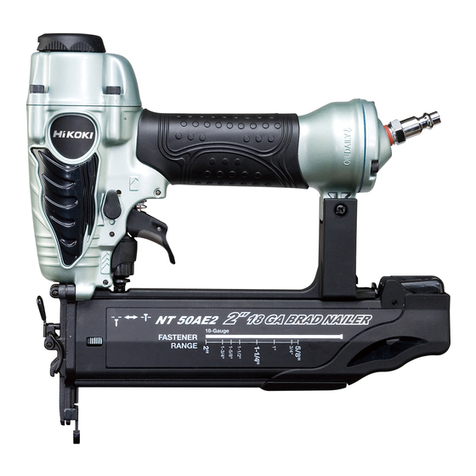Alfamacchine Minigraf 4 manual

1
Minigraf 4
INSTRUCTION HANDBOOK
Minigraf 4
Alfamacchine
Via Selva 23/25 - 47100 Forlì - Italy
Tel. +39-0543-783301 - Fax +39-0543-783302

2
Minigraf 4
Index
1. GENERAL INFORMATION 3
1.1 PRODUCER 3
1.2 ASSISTANCE CENTERS 3
1.3 CERTIFICATION 3
1.4 WARRANTY 3
1.5 PRE-ARRANGEMENTS CHARGED TO THE CUS-
TOMER 3
1.6 HANDBOOK STRUCTURE 3
2. MACHINE DESCRIPTION 5
2.1 WORKING PRINCIPLE 5
2.2 MAIN COMPONENTS 5
2.3 MACHINE STRUCTURE 5
2.4 DIMENSIONS 5
2.5 SURROUNDING CONDITIONS 5
2.6 LIGHTING 5
2.7 VIBRATIONS 5
2.8 NOISE EMISSIONS 5
2.9 TECHNICAL DATA 6
2.10 STANDARD EQUIPMENT 6
2.11 ELECTROMAGNETIC AMBIENT 6
3. SAFETY 7
3.1 GENERAL WARNINGS 7
3.2 SCHEDULED USE 7
3.3 INADVISABLE USE 7
3.4 DANGEROUS AREAS 7
3.5 PROTECTION DEVICES 7
3.6 STOP FUNCTIONS 7
3.7 SAFE WORKING PROCEDURES 7
3.8 RESIDUAL RISKS 8
3.9 PLATES 8
4. INSTALLATION 8
4.1 SHIPPING AND HANDLING 8
4.2 STORAGE 8
4.2 STOCCAGGIO 8
4.3 PRELIMINARY ARRANGEMENTS 9
4.4 UNPACKING 9
4.5 CONNECTIONS 9
4.6 PRELIMINARY CONTROLS 10
4.7 MACHINE ARRANGEMENT 10
4.8 ADJUSTMENTS 11
4.9 ITEMS TO CHECK BEFORE USING THE MACHINE14
5. FUNCTIONING 15
5.1 OPERATORS 15
5.2 FUNCTIONING DESCRIPTION 15
5.3 TIPS FOR PERFECT JUNCTIONS 15
5.4 MACHINE STOP 16
5.5 MACHINE REINSTATEMENT 16
5.6 PUTTING OUT OF SERVICE 16
6. MAINTENANCE 17
6.1 STATE OF MAINTENANCE 17
6.2 MACHINE ISOLATION 17
6.3 SPECIAL PRECAUTIONS 17
6.4 CLEANING 17
6.5 LUBRICATION 17
6.6 ORDINARY MAINTENANCE 17
6.7 EXTRAORDINARY MAINTENANCE 18
7. DIAGNOSTIC 19
7.1 SAFETY WARNINGS 19
7.2 TROUBLESHOOTING 19
8. SPARE PARTS 21
8.1 SPARE PARTS LIST 21
8.2 SPARE PARTS ORDERING 21
9 DEMOLITION 21
9.1 DEMOLITION 21
10. ATTACHMENTS 21
10.1 DECLARATIONS 21
10.2 SCHEMES 21
*This machine is equipped with a frontal safety guard as standard equipment to comply with CE regulations
for the EUROPEAN MARKET.
It can be supplied for other markets on request for and additional charge.

3
Minigraf 4
1. GENERAL INFORMATION
1.1 PRODUCER
The firm Alfamacchine can boast more than 10 years of
experience in the construction of Woodworking Machines.
It has acquired technological know-how, developed during
years of researche in strict touch with manufacturing
departments and international commercialization. We offer
the best warranty that anyone can grant to its customers.
TEL 39-0543-482711 FAX 39-0543-480770
1.4 WARRANTY
ALFAMACCHINE’s products are constructed to have a long
life and are tested one by one.
If, in spite of this, if there is any damages or malfunctions,
the replacement of defective parts is warranted (counting
from the date written on the sales invoice) for a period of:
- 24 months for mechanical components
- 12 months for pneumatic part
The driver blade is tested for about 1.000.000 working
cycles.
The Warranty does not include the sending of technical
staff.
Warranty repairs will be performed at ALFAMACCHINE
plants and the freight of shipment will be entirely charged
to the Customer.
Warranty does not cover damages caused by an inappropriate
use of the machine or not corresponding to the instructions
described in this handbook.
The warranty is voided in case of unauthorized
modifications or because of accidental damages or
tampering performed by unauthorized personnel.
The warranty is also voided if you use v-nails different
from the original ALFAMACCHINE ones.
To take advantage of warranty services it is necessary, at
the moment you receive your machine, to fill out the
warranty card and send it back as soon as possible to
ALFAMACCHINE.
The warranty will be valid only after the ALFAMACCHINE
receives & records your warranty card.
1.5 PRE-ARRANGEMENTS CHARGED TO
THE CUSTOMER
It is the customer’s duty, on times agreed with the producer,
to execute what is indicated in our documentation.
Things normally charged to the customer:
•Premises predisposition, included building works
•Pneumatic supplyng of compressed air (see the
paragraph 4.5)
1.6 HANDBOOK STRUCTURE
The customer must pay extreme attention to the information
reported in this handbook, because the proper Pre-
Arrangement, Installation and Use of the Machine,
constitute the basis of a correct customer-distributor
relationship.
1.6.1 Object and contents
The goal of this handbook is to provide to the customer all
necessary information so that He would be able to run it in
complete autonomy and safety. The handbook contains
information concerning the technical aspects, machine
working and standby, maintenance, spare parts and safety.
Before making any operation on the machine, the qualified
technicians and operators must carefully read these
instructions. In case of doubt about the correct interpretation
of these instructions, ask your distributor to explain it to
you.
1.6.2 Utilizers
This handbook is made both for operators and technicians
authorized to use or repair the machine.
The operators can not execute operations reserved to the
qualified technicians.
The producer does not answer to damages derived from
not-observing this prohibition.
1.6.3 Preservation
The instruction handbook must be kept very close to the
machine, in a special container protected from liquids and
whatever could compromise its legibility
1.3 CERTIFICATION
The machine is produced in conformity to the pertinent
European Community Norms in force at the moment of its
introduction on the market.
1.2 ASSISTANCE CENTERS
ALFAMACCHINE is represented in North & South America
by a and prepared sales organization. Contact us directly
for the name & number of your closest distributor.
For every need regarding Use, Maintenance or Request of
Spare Parts, the Customer should call their distributor.

4
Minigraf 4
1.6.4 Symbols utilized
P...
A...
O...
I...
C...
R...
WARNING
OBSERVATION
INQUIRY
EXAMINATION
ADJUSTMENT
It indicates a danger with a mortal risk for the operator
It indicates a warning or a note about key functions or
useful information. Pay the maximum attention to the
paragraph marked with this symbol.
It is requested to take a measurement data, to check a
signal,....
The user is requested to check the proper positioning of
any element of the machine, before operating a certain
command
It’s necessary to consult the handbook before performing a
certain operation
In case of a strange working and/or anomalies, can be
requested a certain mechanical adjustment and/or electrical
setting
DANGER

5
Minigraf 4
2.2 MAIN COMPONENTS
The main components of the machine are:
- Frontal clamping device to have perfect junctions.
- Adjustable tilting fences.
- Magnetic pressure pads of several types to provide the
proper clamping of any profile
- Soft moulding clamp device that adjusts the pressure
during the several working phases.
- Dual function foot pedal for separate control of clamping
and nail insertion
- Pneumatic opening of the V-nail magazine for very
quick reloading
- Nail heads sizes 7, 10 and 15 mm.
2. MACHINE DESCRIPTION
2.3 MACHINE STRUCTURE
The direction the machine will move while working is listed
below:
- XAXIS
Movement of the horizontal clamp
- YAXIS
Movement of the vertical clamp
Picture 2. 1 A - Movement directions
2.4 DIMENSIONS
The overall dimensions are reported on table 2.9-A
2.5 SURROUNDING CONDITIONS
The machine does not need special surrounding conditions.
It has to be installed inside an industrial building, lit, aired
and with a compact and flat floor. The admitted temperatures
go from 5° to 40° C, with an humidity not higher than 50%
at 40° C or 90% at 20° C.
2.6 LIGHTING
Premises lighting must be conformed to the norms in force
in that Country where the machine is installed. It has to
guarantee clear visibility and can’t create dangerous light
reflections.
2.7 VIBRATIONS
In standard conditions conformed to the indication of
machine proper utilization, the vibrations do not create
dangerous conditions.The average quadratic weighed level,
according to the acceleration frequency to which arms are
exposed does not exceed 2,5 m/s2.
2.8 NOISE EMISSIONS
The machine is designed and projected for reducing the
noise emission level to its source. In standard working
conditions the Machine noise power level is:
Acoustic Continuous Equivalent weighed
pression A <70dB
Acoustic Istantaneous weighed
pression <130dB
The noise levels indicated are emission levels and do not
represent operating levels. In spite of an existing
relationship between emission levels and exposure ones,
this can not be used in a reliable way to define if further
precautions are necessary. The factors determining the
exposure level to which the working force is subjected,
include exposure length, working premises characteristics
and other noise sources (number of machines, closed area,
etc…). Furthermore the allowed exposure levels could
change according to several different Countries. At any
rate, the information provided, will allow the Machine
Operator to achieve a better evaluation of the danger and
risks they are submitted to.
The indicated noise levels are emission
ones measured in standard conditions of
use. In case of any machine modification,
the above mentioned levels could be
changed and should be tested on the same
machine.
2.1 WORKING PRINCIPLE
The frame assembling machine Minigraf 4 has been realized
for the production of medium or large sized frames.
The machine is equipped with a V-nail driver mounted on
a movable carriage which can be pneumatically controlled
by the operator.
The frame assembling machine Minigraf 4 can use special
“Pulling Power” V-nails which draw the corners very tight
together.

6
Minigraf 4
2.9 TECHNICAL DATA
We have listed below the Machine data and technical
characteristics to which you can make reference for any
eventual contact with your distributor for Technical
Assistance.
TABLE 2.9.A - Technical data
Frames thickness min.-max. mm 6-70
Frames width min.-max. mm 10-90
V-nail magazine capacity n. 220
V-nail size mm 7-10-15
V-nails size on request mm 3-5-12
Pneumatic supplying BAR 4-6
Weight ca. kg 36
Height of working bench mm 130
Overall dimensions mm 350x550x320
2.10 STANDARD EQUIPMENT
The equipment listed below are the standard parts.
2.10.1 Standard accessories
Once you have removed the packaging, please check the
presence of following accessories:).
- N.1 nail head mm. 7
- N.1 nail head mm.10
- N.1 nail head mm.15
- N.1 L shaped pressure pad
- N.1 Rounding pressure pad
- N.1 Allen Wrench 5mm
- N.1 Brass rod magnet
2.10.2 Upgrading and implementing of mechanical
parts
The machine has been designed following a modular
criterion, therefore the existing equipment can be further
upgraded with additional accessories that will not alter its
basic structure.
Technical upgrades on the machine model, if any, will be
such that they can be installed at any time without requiring
any substantial modifications to the machine structure.
2.10.3 Optional accessories
•Floor stand
•Wooden working bench extension
•Metallic working bench extension
•Special fences for octagons
•Special fences for hexagons
•Round and square pressure pads in rubber
•V-nails claw heads size 3-5-12 mm.
•Double mechanical pressure pad
•Triple mechanical pressure pad
2.10.4 Customized optional accessories
Thanks to its versatility this machine can be ‘custom-made’
to meet our users requirements. With additional accessories,
you can make frame assembling easier. ex: special fences
for peculiar moulding shapes, special clamps to ensure the
mouldings are locked properly during V-nail firing, and so
on.These can be special made for you at your local machihne
shop.
2.11 ELECTROMAGNETIC AMBIENT
The Machine is designed to operate properly in an
industrial electromagnetic ambient without altering it being
an exclusively pneumatic machine.

7
Minigraf 4
3. SAFETY
3.1 GENERAL WARNINGS
The operator must read paying the maximum attention to
the information written in this Handbook, expressively
about proper precautions for Safety listed in this chapter.
It is advisable for the operator to follow the warnings listed
here below:
•Keep the machine and the working premises clean &
ordered
•Provide appropriate containers to stock the pieces you
are going to work with.
•Use the Machine only in normal psycho physical
condition
•Wear adequate clothing to avoid obstacles and/or
dangerous entanglements to/from the machine
•Wear the individual protection gears described in the
instructions handbook
•Do not remove or alter the warning plates and adhesive
signs
•Do not remove or elude the Machine Safety Systems
•Keep the fingers away from the working area
•Disconnect the air pressure supply during any
maintenance intervention
•Keep the feet separated from the pedal during the
Machine maintenance
3.2 SCHEDULED USE
The Machine is designed and built to assemble junctions
of frames.
The machine is projected for manual use only (under
operator control).
3.4 DANGEROUS AREAS
The area of frames assembly is defined as the “working
area”
The dangerous areas of machine, include the movable parts
and surrounding zones
Figure 3.4.A- Working area and dangerous zones
3.5 PROTECTION DEVICES
The machine is equipped with adequate protections for
persons exposed to the risks of using this machine, taking
into consideration the working parts (driver blade, horizontal
clamp, vertical clamp).
3.6 STOP FUNCTIONS
The machine stop functions are the following:
•Fast clutch fitting stop (Category 0).
•Foot pedal Stop (Category 1).
STOP CATEGORY 0
It is obtained disconnecting the fast clutch fitting from
feed system (uncontrolled stop).
STOP CATEGORY 1
Controlled stop obtained by lifting the foot from the
pneumatic pedal that does not allow the v-nails to drive.
The other risks related with using the machine are:
- Finger crushing in the vertical clamp working area
- Finger crushing in the frontal clamp working area
It is necessary to follow carefully the following
instructions:
1 Keep the fingers away from frontal and vertical clamp
working areas
2 Disconnect the air pressure during any maintenance
interventions
3 Keep the foot away from the pedal during machine
repairs
The machine is projected and realized to
eliminate any risk connected with its use.
The user s requested to achieve an adequate
training to be instructed by their local
distributor .
3.7 SAFE WORKING PROCEDURES
3.3 INADVISABLE USE
The machine can not be used for:
•For uses different from those listed in 3.2 paragraph
•In an explosive or aggressive atmosphere, where there
is a high density of dust or oily substances suspended
in the air
•In a flammable atmosphere
•Outside in all weather severity
•For working materials not suitable with the machines
characteristics

3.8 RESIDUAL RISKS
During the normal working cycle and while performing
maintenance, the operators are exposed to several residual
risks that, because of the operations own nature, can not be
totally eliminated.
•Risk of finger crushing in the working areas of the
vertical and frontal clamps
3.9 PLATES
The warning plates carrying out safety functions can not be
removed, covered or damaged.
To view the plates or adhesive signs location, consult the
Fig.10.2-D
Table 3.8 A- Types of plates
Plate concerning the machines characteristics
Adhesive sign concerning the fingers
crushing area
Adhesive sign concerning the behaviour to be kept
during the working cycle
Adhesive sign concerning the behaviour to be kept
during the working cycle
4. INSTALLATION
4.1 SHIPPING AND HANDLING
The shipment must be performed by a professionally
qualified staff. The machine has to be shipped in a safe way
to avoid any damage to its parts.
•All the protections and guard devices must be properly
closed and locked.
•The machine has to be shipped like positioned for
installation.
•Before shipping it is necessary to lubricate the parts
that are not painted to avoid their detriment.
•According to the type of shipment, it is necessary to
protect the machine from any jarring impact or stress
Figure 4.1A – machine handling indications
Machine total weight: about 36 Kilos
4.2 STORAGE
In case of long inactivity, the machine must be stored with
the proper precautions concerning storage place and times.
•Store the machine indoors
•Protect the machine from jarring impacts and stresses
•Protect the machine from humidity and high
temperatures
•Store the machine away from corrosive materials
•Lubricate the parts which are not painted
Any damage of the machine caused during its shipment or
handling is not covered under warranty.
Repairs or replacements of damaged parts are charged to
the customer.
Lifting the machine must be
performed by 2 operators.

4.3 PRELIMINARY ARRANGEMENTS
In order to install the machine it is necessary to prepare a
working area adequate to the machines dimensions.To fulfill
the characteristics of precision and steadiness, the bench
frame assembling machines must be positioned on a solid
and level table able to sustain the weight of the machine.
4.4 UNPACKING
The machine, bench version, is shipped & packed in an
appropriate carton and protected by polystyrene parts.
Remove the external packing and save it for a future use.
Check for any casual shipping damage and report it
immediately. Shipping damages or any other defects must
be reported to
Alfamacchine
within and not later than 3
days from the receipt of the machine.
4.5 CONNECTIONS
To avoid any problems during the setup of the machine,we
suggest you follow the instructions listed here below.
4.5.1 Pneumatic connection
The machine uses compressed air and is controlled by a
dual action foot pedal.
The 3 pipes for comp ressed air connected with the pedal
must be inserted into the 3 fittings located on machines
right side in the following sequence (fig. 2-3):
Use the supplied fast clutch fitting to connect the machine
to the air compressor system. You could use also another
fitting suitable with your pneumatic system (see fig. 2).
Once you have connected the machine with the pneumatic
system, check the proper operation of the foot pedal in the
following ways:
•The foot pedal pressed half way down activates the
horizontal and vertical clamp
•The foot pedal pressed full down activates the V-nail
driver
It is advisable to install a filter/ lubricator on
the air compressed system to provide clean
and lubricated air. Use only silicone
lubricating oil for pneumatic systems. The use
of inadequate oil could damage the valves.
Upper connection Red pipe into the red
fitting (external side)
Center connection Black pipe into the black
fitting(center fitting)
Lower connection Transparent pipe into the
3rd fitting(user side)
Picture. 1
Picture 2
Picture 3

10
Minigraf 4
Check the foot pedal operation when the
V-nail magazine is closed. The foot pedal
control is deactivated when the V-nail
magazine is opened.
4.6 PRELIMINARY CONTROLS
The Machines setup should be perofrmed by a technician
appointed from the customer. Before the starting to use the
machine , it is necessary to execute certain verifications
and checks to prevent mistakes or accidents during setup.
•Verify that the machine has not been damaged during
the assembly steps.
•Verify with extreme care, the pipes integrity
4.7 MACHINE ARRANGEMENT
4.7.1 V-Nails magazine loading
To load the V-nail magazine proceed as follows:
•Move the clawpusher backwards by flipping the special
lever located on the right side of the machine. This will
give you access to the V-nail magazine (see fig. 4).
•Insert one or more V-nails strips into the magazine,
taking care that the glue side faces up and that they are
loaded with the V of the V-nails pointing in the direction
indicated in the figures 5 and 6. Check that the V-nail
size is suitable with the type of claw head mounted.
•Move the claw pusher forward by flipping the control
lever (see fig.4)
4.7.2 V-nail guide head replacement to change V-
nails size
The V-nail guide head must be changed each time you use
V-nails of different sizes.
Proceed as follows to replace it:
•Loosen the locking screw of the V-nail guide head using
a 5 mm Allen wrench. (The screw is on the opposite
side from the V-nails magazine(See fig. 7)
•Remove the V-nail guide head (Claw head)
•Move the claw pusher backwards by flipping the special
lever located on the right side of the machine. This will
give you access to the V-nail magazine (see fig. 4).
•Remove all the V-nails that are still in the magazine
(using the proper brass magnet, if necessary).
•Insert the new V-nail strip(of desired height) into the
magazine
•Move the claw pusher forwards by flipping the control
lever (see figure 4).
•Insert the new size V-nail guide head to match the V-
nails to be used (see fig. 6).
•Tighten the locking screw of the V-nail guide head (see
fig.5).
Picture 5
Picture 6
Picture 4

11
Minigraf 4
Pic 7
Pic. 8
Pic. 9
Pic.10
4.8.1 Setting stops for V-nails positioning
The Minigraf 4 is equipped with a movable driver assembly
that is shifted to the different the V-nail inserting positions.
The limit stops which are located on the machine’s working
bench, determine the V-nails insertion points.
The positioning of these stops can be changed by means of
the handles placed on each stop (fig. 11-12).
The correct measurement of each position is easily set by
means of a measurement gauge that refers to the distance
between each postion and the vertex.
The operator can shift the driver assembly by pressing the
special lever located on the right side of the working bench
(fig. 13-14).
The Minigraf 4 is produced in versions at 2 or 3 positions
(respectively 2P and 3P).
The inserting positions are marked as X and Z in the 2P
version; X, Y and Z in the 3P one.
ATTENTION: When the machine is not
working, the driver assembly is positioned
in the X position: to change it, it is
necessary to shift the driver assembly to
the next positions (Y or Z).
TAKE CARE: In the 3P machine it is
recommended that you use the X and Z as
extreme positions and Y always as the
middle one.
Picture 11
4.8 ADJUSTMENTS
The machine was completely tested and checked at
ALFAMACCHINE before its shipment, the operator has to
peroform only the following adjustments:

12
Minigraf 4
Pict. 12
Pict 13
Pict. 14 Pict16
Pict. 15
4.8.2 Vertical clamp adjustment
The vertical clamp can be adjusted in height and position.
Proceed as follows to adjust them:
4.8.2a Vertical clamp position adjustment
•Position the mouldings to be assembled on the working
bench
•Select the pressure pad suitable with the profile of the
moulding to be assembled and put it on the vertical bar
•Loosen the handle (see fig.15), this will allow the clamp
to shift forward or backward so it puts the pressure pad
directly over with V-nail inserting point.
•Tighten the handle once you have reached the proper
position
4.8.2b Vertical clamp height adjustment
•Loosen the handle which is located on the side of the
clamp (see fig. 16)and adjust the pressure pad height
over the frame until it is between 5 - 8 mm above the
moulding. This will help prevent any accidental
crushing of your fingers.
•Tighten the handle once you have reached the proper
position
•Lower the vertical clamp by pressing half way down on
the foot pedal to verify that the mouldings to be
assembled are properly clamped
•Press all the way down on the foot pedal to insert the V-
nail.
4.8.3 Frontal clamp adjustment
The Frontal Clamp (horizontal clamp) has a series of holes
in the flat bar (see fig.17).
Lift the bar upwards to move it forwards and backwards.
To lock the bar it is sufficient to insert it onto the peg
located in the middle of the guide channel.
Proceed as follows to position the frontal Clamp correctly:
1. Remove the bar from the peg (lifting it up by about 10-
15 mm) and move it forward until it touches the
moulding (see fig.18);
2. Lower the bar into the channel & onto the peg.

13
Minigraf 4
Pict. 17
In case of continued use without
needing to remove the frontal clamp
from its position, it is possible to fix it
to the peg using the proper screw.
During machine transport, it is
advisable to fix the bar using the
supplied knob.
4.8.4 Working pressure adjustment
The working pressure must be adjusted to the hardness of
the mouldings to be assembled.
The pressure regulation allows you to change the clamping
pressure of mouldings to be assembled.Too high of a working
pressure can cause a poor assembly (especially on small-
size frames) and the possibility of crushing the moulding.
Too low of a working pressure can cause an incomplete
insertion of V-nail into the frame.
The working pressure is adjusted by means of the regulator
on the panel near the pressure gauge (see fig. 21).
Proceed as follows to adjust the working pressure:
1. pull up on the regulator cap by about 3-4 mm to unlock
it
2. turn it clockwise to increase the pressure and counter-
clockwise to decrease it.
3. push the regulator cap back down, to lock it into
position
The above listed values apply to 7 and 10 mm high V-
nails.Increase the pressure by 10 % for 15 mm high V-
nails.When stacking 2 or more V-nails, increase the working
pressure by about 10-15 %.
The suggested pressures are:
Soft woods (samba,........) 1.5 - 2.0 Bar
Medium (ramin,........) 2.0 - 3.0 Bar
Very hard woods (oak) 3.0 - 5.0 Bar
Pict 18
Pict. 20
Pict. 19
4.8.4 Fence adjustment
The machine is equipped with a special fence composed of
2 different parts.
Each fence side is equipped with a knob that allows it to tilt
the moulding supports.
Furthermore, if the moulding rolls forward or backwards as
the front clamps engages, you can adjust the tilting fence
to compensate for the defect (fig.18).
In addition to 90 degree frames , the Minigraf 4 can also be
used for 6-sided (120 degrees) or 8-sided frames (135
degrees), by properly positioning the fence (fig. 19-20).
Proceed as follows to modify the position of fence supports:
· use a 5 mm Allen wrench and remove the outside screw;
· loosen the inside screw slightly and position the fence
into the tapped holes located on the working bench.
The proper positioning of the fence can be obtained by
using a special square,which is included with your
machine.Care must be taken to ensure that the 120° or
135°angle is perfectly centered on the internal vertex of
the V-nail head.

14
Minigraf 4
4.9 Items to check before using the
machine
Once the machine has been properly installed check that:
•The magazine is loaded with the type of nails suitable
with the moulding to be assembled
•The claw head matches up with the chosen V-nail size
•The limit stops of the driver assembly are positioned in
the selected points and properly locked (see chapter
4.8.1)
•The pressure pad is placed on the magnetic support
•The vertical and frontal clamps are properly positioned
Fig. 21
Proceed as follows to adjust the protection shield:
1. loosen the 2 knobs on both sides of the protection and
raise or lower it until it is about 6-8 mm from the top of
the moulding.
2. tighten the knobs to lock the protection shield.
You can purchase the guard as an option for your machine.
Even if the protective shield is properly adjusted, it is
necessary to respect the following instructions:
3 keep your fingers away from the frontal and vertical
clamp working area
4 disconnect the pressure supply during any maintenance
intervention
5 keep the foot separated from the pedal while adjusting
the machine
•The working pressure is adequate to the wood hardness
•The limit stops are properly set (see chapter 4.8.3)
•The protective shield is properly positioned (see chapter
4.8.6)
In order to improve the clamping of large
moulding sizes or very hard material we
recommend you use a multiple clamping
device (double/triple mechanic or double
hydraulic clamps)
Opening the guard deactivates the foot pedal

15
Minigraf 4
5.2 FUNCTIONING DESCRIPTION
The Minigraf 4 is a 3 position machine. This machine has
been realized for small and medium size production runs.
The machine has only one possible operating mode:
•Manual functioning using the pneumatic foot pedal
and the pneumatic lever which controls the movement
of the driver assembly.
Pressing the pneumatic foot pedal half way down causes
the clamping of the mouldings.
Pressing the pneumatic foot pedal full down causes it to
drive a v-nail.
The control lever permits the movement of V-nail driver
assembly
•Pressing the lever half way down causes the driver
assembly to move from the 1st to the 2nd inserting
position; pressing it all the way down causes it to shift
to the 3rd inserting position.
To assemble a corner, operate as follows:
1. Set the insertion position handles
(see chapter 4.9.1)
2. Position the moulding to be assembled on the working
bench
3. Adjust the vertical clamp height and positioning ( see
chapter 4.9.2)
4. Adjust the frontal clamp position
(see chapter 4.9.3)
5. Check & adjust the clamp pressure according to the
hardness of the material to be assembled(see chapter
4.9.5)
5. FUNCTIONING
5.1 OPERATORS
The machine has been projected to be used by only one
operator.
The staff assigned to operate the machine, must be in
possession (or acquire through an adequate training) the
requirements indicated below. In addition they must have
knowledge of this handbook and of every information
concerning safety:
•General and technical culture sufficient to comprehend
the handbook contents and understand the drawings
and schemes
•Knowledge of main sanitary, technological and anti-
accidental norms
•Overall knowledge of the line and plant where the
machine is installed
•Specific experience in assembling frames
•To know how to operate the individual protections
devices and how to stop the machine in case of an
emergency
The Maintenance people, in addition to the above
mentioned characteristics, must be in possession of an
adequate technical education. 5.3 TIPS FOR PERFECT JUNCTIONS
a) V-nail types
In order to allow the machine to make excellent quality
junctions using different materials, it has been necessary
to manufacture different V-nails types for different uses
(see attachment D).
V-nails can be classified in three different groups:
for soft woods and
soft plastic
for medium woods
for hard woods
Suggested V-
nail code
Suggested V-
nail code
Suggested V-
nail code
SW
MW
HW
b) Assembling positions
It is advisable to operate as follows in order to achieve the
best results in terms of junction quality:
Never drive V-nails near the junction vertex. The
minimum recommended distance from the external
vertex is at least 10 mm.
When you want to make the junction using only one V-
nail, the most suitable position is in the middle of the
moulding (see fig. 23)
In case you want to insert 2 or more V-nails into each
junction, we recommend you to insert the most external
one 1/3 from the external vertex and the most internal
one 1/4 from the internal vertex.
6. Press half way down on the foot pedal and verify the
proper positioning and clamping of the mouldings
7. Press the foot pedal full down to insert the V-nail (if the
mouldings profile needs 2 or more V-nails stacked in
the same position, release the foot pedal halfway and
then press it again to insert the 2nd V-nail and so on)
8. Release the pedal halfway
9. Press the lateral lever halfway to position the V-nail
ejection group in the next inserting point
10. Press the foot pedal full down to insert
the V-nail (see step 7)
11. Release the pedal halfway
12. Press the lateral lever all the way down
so the driver assembly shifts to the last
insertion point
13. Press the foot pedal full down to insert
the V-nail (see step 7)
14. Release the foot pedal completely to release
the vertical and the frontal clamps.

16
Minigraf 4
figure 23
5.4 MACHINE STOP
The machine can only work by pressing the pneumatic foot pedal; to stop it is enough to lift the foot from the pedal.
It is also possible to disconnect the fast clutch fitting from the compressed air.
5.5 MACHINE REINSTATEMENT
The machine reinstatement is performed by pressing the pneumatic foot pedal.
5.6 PUTTING OUT OF SERVICE
In case on long inactivity periods it is necessary to disconnect the fast clutch fitting from the pneumatic system.

17
Minigraf 4
Unsuitable lubricants may cause valve
seal problems (seals may become too
large) and consequent Valve jamming.
6. MAINTENANCE
6.1 STATE OF MAINTENANCE
The maintenance operations must be performed with the
machine in the conditions described at the “state of the
machine” in the tables 6.6.A and 6.7.A
6.2 MACHINE ISOLATION
Before performing any type of maintenance or repair , it is
necessary to isolate the machine from the following
supplying sources:
1) Disconnect the fast clutch fitting from the pneumatic
system.
Once you have finished the maintenance intervention &
before reconnecting the pneumatic supply, make sure that
any & all components and any pneumatic connections are
properly reinstalled.
6.3 SPECIAL PRECAUTIONS
During the maintenance or repair operations is suggested
to proceed as follows:
•Before starting any operation place a sign “machine
under maintenance” in a highly visible position
•Do not use solvents or flammable materials
•Do not step on the machine parts, because they have
not been manufactured to sustain the weight of people.
•Once all the operations are finished, reinstall the
protections or shields you removed or opened
6.4 CLEANING
The machine structure is simple and robust therefore the
mechanical parts do not require any special maintenance.
It is advisable to follow the rules listed below:
•Regularly remove glue or other residues from the V-
nail head and from the upper part of the driver blade;
•Always keep the V-nail magazine clean
•Remove any residue from the V-nail guide “L” shaped
support.
Do not use water to clean the machine, otherwise the metal
parts may rust.
Before performing any cleaning
intervention, the operator must disconnect
the pneumatic system..
6.5 LUBRICATION
Preferably CASTROL MAGNA GC 32 or equivalent oil
Furthermore, we recommend you lubricate the driver blade
every 200 working hours.
6.6 ORDINARY MAINTENANCE
The following operations must be executed at the times
indicated below. Not observing the following instructions
exonerate the Producer from any responsibility regarding
the warranty.
The operations described below, even if simple, must be
executed by qualified personnel.
The ordinary scheduled maintenance includes overhauls,
checks and interventions that will help prevent stops and
breakdowns.
•Lubrication state of the machine
•Wear and tear parts state

18
Minigraf 4
Table 6.6.A - Ordinary Maintenance
Maintenance
V-nail driver blade
Movable parts lubrication
V-nail claw heads
“L” shaped supports (V-nail guide)
Description
Replacement every 1.000.000 V-nails shot
Lubricate the driver blade every 200
working hours
Replacement every 5.000.000 V-nails shot
Replacement every 5.000.000 V-nails shot
Machine state
Isolation for maintenance
Isolation for maintenance
Isolation for maintenance
Isolation for maintenance
6.7 EXTRAORDINARY MAINTENANCE
Listed below are the operations that need the intervention of ALFAMACCHINE , your distributors Technical Assistance (see
the paragraph 1.2) or by qualified staff authorized by the Producer
The extraordinary maintenance includes interventions to be performed in exceptional cases:
•Breakage
•Revisions
MAINTENANCE
Valves and Reducers
Frontal and vertical clamp gaskets
DESCRIPTION
Suggested replacement every 6/8 million
of V-nails shot
Replacement in case of air leaks
MACHINE STATE
Isolation for maintenance
Isolation for maintenance
TAB. 6.7 A

19
Minigraf 4
7. DIAGNOSTIC
7.1 SAFETY WARNINGS
The interventions must be performed by personnel properly trained and must take all precautions in order to avoid accidental
starts.
7.2 TROUBLESHOOTING
TROUBLE
Pressing the foot pedal the V-nail
ejection is irregular
Pressing the foot pedal the V-nail
ejection is irregular
Pressing the foot pedal the V-nail
ejection is irregular
Pressing the foot pedal the V-nail
ejection is irregular
Pressing the foot pedal the V-nail
ejection is irregular
Pressing the foot pedal the V-nail
ejection is irregular
Pressing the foot pedal the V-nail
ejection is irregular
Pressing the foot pedal the V-nail
ejection is irregular
Pressing the foot pedal the V-nail
ejection is irregular
Pressing the foot pedal for several times
the machine’s working that was correct
at the beginning becomes irregular later
Pressing the foot pedal the working
pressure indicated on the regulator
deeply decreases
Pressing the foot pedal the working
pressure indicated on the regulator
deeply decreases
POSSIBLE CAUSE
Insufficient working pressure
V-nails placed wrong in the
magazine
Guide channels damaged or
jammed
Claw pusher has insufficient
thrust
Claw head not suitable with V-
nails size
Faulty V-nails
Insufficient working pressure
Opened V-nail magazine
Faulty valves
Jammed valves because of
surplus of oil or condensation
Faulty pressure regulator
Feeding pipe too long or of
inadequate diameter
REMEDY
Check that the minimum value indicated
from the main regulator is higher than 3
Bar
- Check that the V-nails glue
side faces up
- Check that V-nails V vertex is
pointing toward machine’s
external side
-Defective nails- replace them
- Check that the guide channels
are not dirty or jammed
Check that the pressure on the claw
pusher cylinder is at least 2 Bar. If
necessary, increase it by 10%.
Check that the number engraved on the
v-nail claw head matchs up to the V-nails
size
- Replace the V-nails
- Use shorter sticks of V-nails
Check that the air pressure coming out
from the compressor is at least 3 Bars.
Close the magazine by means of the
special lever
- Replace the foot pedal valve
- Replace the control valves
-Remove the surplus of oil and
condensation from the valves by
disconnecting one by one the control
pipes -making the oil/water come out
with the air
-Replace the regulator
Replace the piping with a new one of
bigger diameter
TABLE 7. 2 - A

20
Minigraf 4
TROUBLE
Pressing the foot pedal the machine
works properly, but once the pedal is
released you can note a certain delay in
re-positioning of driver blade and/or
vertical clamp cylinders
Wishing to insert several V-nails one
upon the other in the same point, they
do not stack properly or tilt during their
insertion
Wishing to insert several V-nails one
upon the other in the same point, they
do not stack properly or tilt during their
insertion
Wishing to insert several V-nails one
upon the other in the same point, they
do not stack properly or tilt during their
insertion
Wishing to insert several V-nails one
upon the other in the same point, they
do not stack properly or tilt during their
insertion
POSSIBLE CAUSE
Faulty or jammed valves
Unsuitable V-nails
Poor frames clamping (the frame
moves during the V-nail
insertion)
Worn driver blade
Jammed driver blade
REMEDY
- Remove the surplus of oil and/
or condensation
- Replace the foot pedal valve
- Replace the faulty control
valves
Replace the V-nails with suitable ones
- Check and in possibly replace the
vertical and frontal clamping positions
- Increase the pressure by using
the regulator
- Replace the pressure pad with
the proper one
Replace the driver blade
Clean the driver blades upper part
removing any material jamming the
upper profile
7.3 REQUEST OF ASSISTANCE
For any information regarding Use, Maintenance, Installation, etc.. we remain at your disposal. The Customer can send a
detailed fax describing the problems encountered. For eventual explanations we suggest you use this handbook and the
instructions listed in the paragraph 1.2. as a reference.
E_Mail: [email protected]
FAX: +39 0543 480770
via Dell’Artigiano, 12 - 47100 Forlì - Italy
Table of contents
Other Alfamacchine Nail Gun manuals
Popular Nail Gun manuals by other brands

Draper
Draper Storm Force STNEKSF instructions
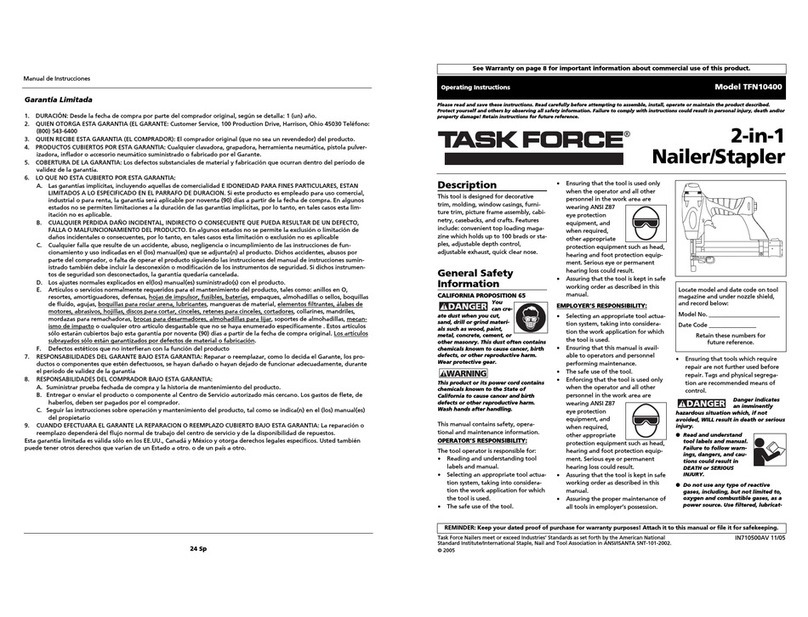
Task Force
Task Force TFN10400 operating instructions
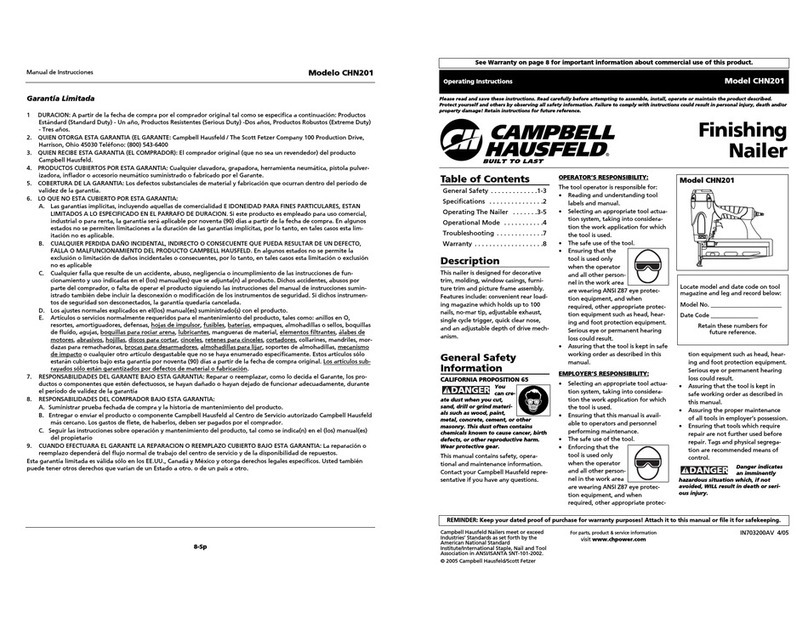
Campbell Hausfeld
Campbell Hausfeld CHN201 operating instructions

Parkside
Parkside 273474 Operation and safety notes translation of the original instructions

Senco
Senco SFN40 operating instructions
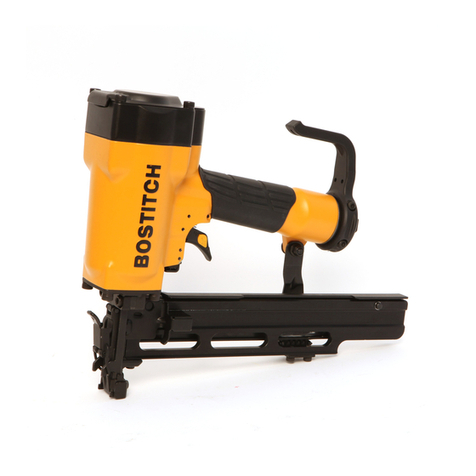
Bostitch
Bostitch 651s5-1e Original instructions
